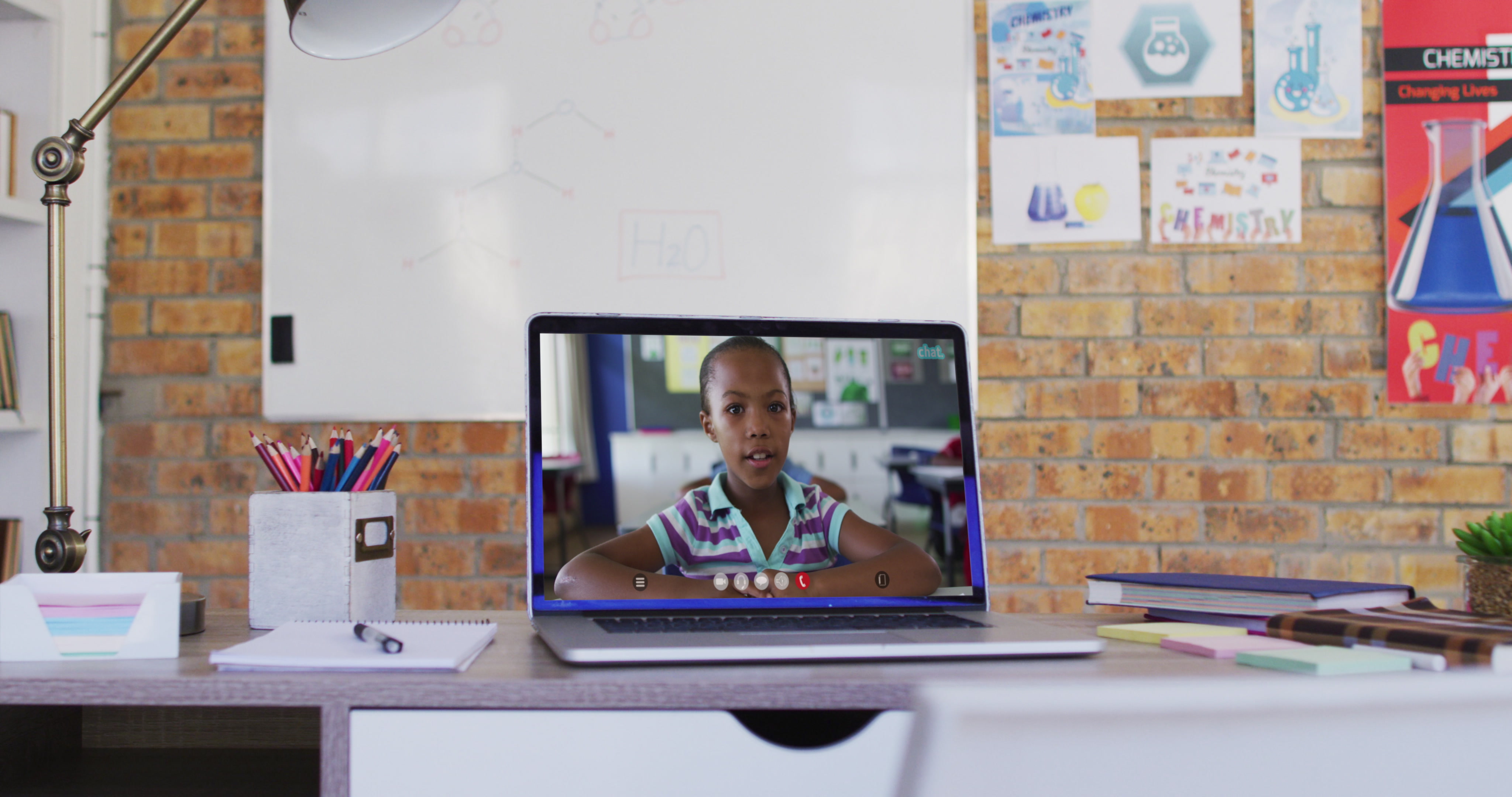
Virtual AAC Assessment
October 31, 2022
In a perfect world, each student who required an Augmentative and Alternative Communication (AAC) assessment would be given the luxury of choice: would an in-person or a virtual assessment best meet this student’s individual needs?
In reality, though, students are often without the means to obtain this luxury. Some families are not able to transport their child to an SLP for an in-person AAC assessment. Some schools do not have an in-person SLP to conduct the assessment at the school. Some children exhibit behaviors that make transportation to school, a doctor’s office, or a clinic unpredictable and at times unsafe. In any of these scenarios, a virtual assessment is not a choice, it is a necessity; however, that doesn’t mean that we are without options for optimal data collection.
The Basics – Technology & Necessary Considerations
All assessments must be conducted using a HIPAA secure platform. Luckily, we have a wealth of options on this front including doxy.me, Zoom (the paid version), and Google Meet to list a few.
Both the SLP and the student being assessed should have access to a computer with a reliable internet connection. Headsets or headphones can help with audio clarity both for the student as well as the SLP but are not necessary if you have adequate microphones and speakers on your computer.
Gather as much background information as possible prior to your evaluation through parent questionnaires, teacher forms, recent IEPs, and recent evaluations. This step is crucial to understanding what methodology of data collection you’ll be utilizing with your client. Are you assessing solely prelinguistic skills? Is a feature matching component to your assessment appropriate? Do they have underlying medical conditions that will make it difficult/impossible for them to interact with digital manipulatives? If so, does their home/school environment have physical manipulatives available for use?
Family and Facilitator Training
Depending on the location of your client for the assessment, it’s likely some training will be necessary for the family members, technology facilitator, or both! It can be helpful to set up a short phone call or video meeting with whoever is facilitating the assessment to go over the schedule for the evaluation (how long will it last, how many tests/games are you doing, etc.), expectations for the student, and specifications on roles (when you’ll need them to help, how they’ll know to jump in, etc.). Clearly communicating what expectations you have regarding their role in the assessment process will help them feel less anxious about the experience, and will also help you gather the most reliable data possible.
Assessment
There are multiple methodologies for the actual assessment portion of this process, but the key here is to be as flexible as possible and remember – you are not alone in this. Consulting other professionals such as OTs, PTs, school psychologists, or play therapists to provide insight into your client is crucial. For the language portion of your assessment, Dynamic Assessment methods, observational checklists, feature matching to identify cognitive skills beneficial to communication are all appropriate methodologies. You can read more about resources for AAC Assessment via this blog post “AAC Assessment in Schools – A Team Approach.”
Step by Step Process
Last but not least, let’s get into how to set up a virtual AAC assessment.
-
Gather background information prior to scheduling a virtual meeting with the student and set expectations
-
Verify student equipment and check personal assessment equipment
-
Assessment of communicative intent (through gestures, behaviors, verbal approximations, etc.)
-
Consultation of other professionals to determine visual scanning abilities, fine motor abilities, and other aspects that affect AAC device selection
-
Complete your write up and, if applicable, write goals for therapeutic intervention
Virtual assessments allow SLPs real-time insight into a client’s communicative behavior when they are at their most comfortable – their home setting. This insight is often lacking from in-person assessments and is a benefit not only to our holistic understanding of our clients but to our clients’ abilities to demonstrate their optimal communication abilities.
What are some of your favorite ways to assess pediatric clients virtually? Comment below!
For more in this AAC Assessment series be sure to read:
AAC Assessment in Schools – A Team Approach
Push In vs Pull Out – AAC Therapy
References & For Further Reading
Alvares, A. (2013). Working with facilitators to provide school-based speech and language intervention via telepractice. Perspectives on Telepractice, 3(2), 44- 48. https://doi.org/10.1044/teles3.2.44
American Speech-Language-Hearing Association (2020). Considerations for Speech, Language, and Cognitive Assessment via Telepractice. Retrieved September, 15, 2022, from https://www.asha.org/SLP/clinical/Considerations-for-SpeechLanguage-and-Cognitive-Assessment-via-Telepractice/
American Speech-Language-Hearing Association (n.d.). Telepractice. (Practice Portal). Retrieved September 15, 2022, from www.asha.org/Practice-Portal/Professional-Issues/Telepractice/
Anderson, E. (2020, August 18). Remote AAC assessments-tips, considerations, and unexpected surprises. AT3 Center. Retrieved September 15, 2022, from https://at3center.net/2020/08/18/remote-aac-assessments-tips-considerations-and-unexpected-surprises/ Campbell, D. R., & Goldstein, H. (2022). Evolution of telehealth technology, evaluations, and therapy: Effects of the COVID-19 pandemic on pediatric speech-language pathology services. American Journal of Speech-Language Pathology, 31(1), 271–286. https://doi.org/10.1044/2021_ajslp-21-00069 Hall-Mills, S., Johnson, L., Gross, M., Latham, D., & Everhart, N. (2022). Providing telepractice in schools during a pandemic: The experiences and perspectives of speech-language pathologists. Language, Speech, and Hearing Services in Schools, 53(2), 290–306. https://doi.org/10.1044/2021_lshss-21-00023
About the Author

Marisa Julius is a speech-language pathologist that has worked in both public and private school settings with a focus in pediatric augmentative and alternative communication therapy. She currently works for a private specialized school setting with children 5-21 with complex communication needs and a variety of disorders including Autism Spectrum Disorder, Down Syndrome, Childhood Apraxia of Speech, Language Delays, Reactive Attachment Disorder, and more. She is a Missouri native and earned two Bachelor degrees from Truman State University in Communication Disorders and German Studies. She received her M.A. in Communication Sciences and Disorders from Saint Louis University. She considers herself a lifelong learner, and is thrilled to be writing for SLP Toolkit, if only for an additional excuse to read more. In her free time, you can find her cooking, reading, hiking, or showing everyone unsolicited pictures of her dog.



